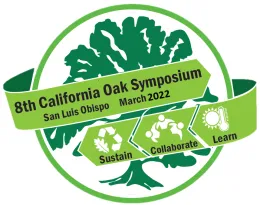#54

Post-fire Recovery in the Understory: Woody Fuels Management and Restoration in Oak Forests at Pepperwood
Michelle Halbur, Pepperwood Preserve
Tosha Comendant, Pepperwood Preserve; Michael Gillogly, Pepperwood Preserve; Devyn Friedfel, Pepperwood Preserve; Ryan Ferrell, Pepperwood Preserve; Makayla Freed, Pepperwood Preserve; Morgan Gray, Pepperwood Preserve; Sonja Barringer, Pepperwood Preserve; Steven Hammerich, Pepperwood Preserve; Lisa Micheli, Pepperwood Preserve
Following severe wildfire, land managers are often faced with forest conditions that require intensive management in the understory, such as controlling plant invasions or addressing the perpetuation of woody fuel loads in the forest understory from falling trees and limbs. Here we present our monitoring data and observations at Pepperwood Preserve, a 3,200-acre nature preserve in Sonoma County, that was burned in October 2017 and 2019 by the Tubbs and Kincade Fires. In areas managed for Douglas-fir incursion, we documented significant reductions in surface fuel loads (i.e., slash) after the Tubbs Fire, except for 1000-hour fuels that were maintained, and in some cases increased, from continuously dying and falling trees. Fine fuel loads rebounded within two years following fire, mostly due to increased herbaceous and invasive weed biomass. To deal with tree mortality in the canopy and the accumulation of understory slash, Pepperwood thinned oak forest areas and conducted pile burns in winter and spring 2020, resulting in localized areas of high burn intensity. We are restoring these pile burn areas to prevent additional invasive weed establishment and to encourage the forest understory to recover to a perennial grass-dominated system.
